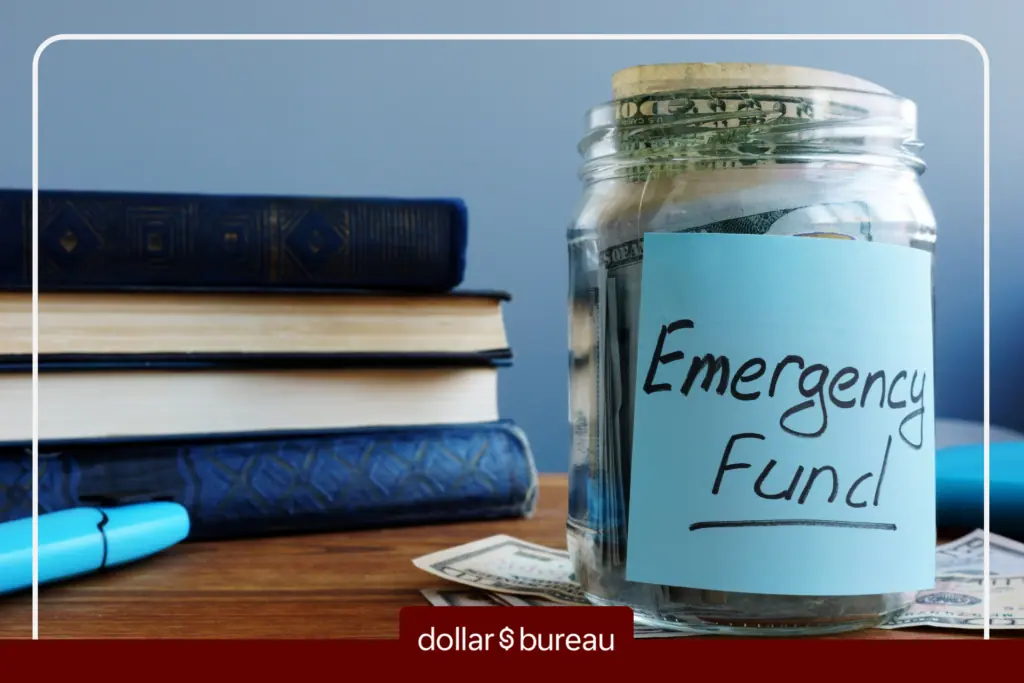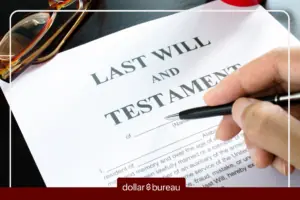In the heart of Singapore, where the cost of living can soar as high as the Marina Bay Sands, there’s one financial safety net everyone talks about but many of us find ourselves scrambling to properly establish: The emergency fund.
In this post, you’ll discover:
- The crucial role of an emergency fund in Singapore’s expensive living environment
- Practical steps to building and growing your fund
- Smart places to park your emergency savings for accessibility and growth
- Navigating the common pitfalls and making the most out of your emergency fund
Whether you’re starting from scratch or looking to optimise your existing fund, this guide is tailored to help you navigate the complexities of financial preparedness in Singapore.
So, buckle up, and let’s dive into creating that financial buffer that stands between you and life’s unexpected turns.
What is an Emergency Fund?
Picture this: You’re going about your usual day when suddenly, the unexpected happens.
Your car breaks down, you get an unexpected medical bill, or, heaven forbid, you lose your job.
It’s situations like these where an emergency fund becomes your financial parachute.
So, what exactly is an emergency fund?
Think of it as a buffer of cash, set aside specifically to cover the costs of life’s unwelcome surprises.
This isn’t the money you dip into for a spontaneous holiday or that new phone that’s just hit the market.
No, this fund is purely for those unpredictable moments that life throws at you, ensuring that you won’t have to resort to credit cards or loans – avenues that could plunge you into debt.
Why do I need an emergency fund in Singapore?
Life has a knack for throwing curveballs when you least expect it.
In Singapore, where the cost of living isn’t exactly pocket change, having an emergency fund isn’t just recommended, it’s essential for significant reasons:
Loss of Income
The thought of losing your job can be unsettling.
In the event of a sudden loss of income, an emergency fund acts as a financial lifeline.
It gives you the breathing space to find new employment without the added pressure of immediate financial obligations.
With the average job search taking a few months, having that cash reserve means you won’t be at risk of missing rent or skimping on meals.
Health Emergencies and Accidents
Singapore’s healthcare is top-notch, but it comes at a cost.
Insurance can cover a chunk of this, yet there are always extras that can add up quickly, such as medication, treatments not covered by insurance, or even alternative therapies.
For instance, a simple broken bone can set you back hundreds of dollars after government subsidies and insurance.
Your emergency fund is the buffer that keeps you afloat and stress-free while you recover.
Replacing Electronics
We’re more reliant on our tech than ever.
A sudden demise of your laptop or smartphone isn’t just an inconvenience; it can be a barrier to work and staying connected.
In tech-savvy Singapore, where being online is almost a necessity, having the funds to replace these essentials without a second thought can mean the difference between a minor hiccup and a major disruption in both your professional and personal life.
Navigating the Pitfalls of Bad Debt with an Emergency Fund
Let’s talk about the dreaded ‘D’ word – debt, particularly bad debt.
It’s the kind that doesn’t do you any favours, like high-interest credit card debt that can sneak up on you if you’re not careful.
In Singapore, where credit cards are as common as kopi-o at a hawker centre, it’s easy to fall into the trap of swiping now and worrying later.
So, why does an emergency fund matter in this context?
Well, it’s simple.
Having an emergency stash means you won’t need to rely on credit cards when unexpected expenses pop up.
Imagine your air conditioner breaks down in the middle of a sweltering Singaporean summer.
Without an emergency fund, you might reach for your credit card, adding to your debt pile and stress levels.
But with a solid emergency fund, you can pay for these surprise costs upfront and save yourself from the high interest rates that come with bad debt.
Taking a Breather: How an Emergency Fund Facilitates a Sabbatical
Have you ever daydreamed about pressing ‘pause’ on the daily grind to pursue a passion, further your studies, or simply recharge your batteries?
In Singapore’s fast-paced environment, the idea of a sabbatical might seem like a distant luxury.
But what if it didn’t have to be?
This is where your emergency fund steps into the spotlight.
It’s not just there for the emergencies; it can also serve as a launchpad for taking a well-deserved break from work.
When you have a financial cushion, you have options.
You can afford to take time off without the nagging worry of how to cover your next utility bill or credit card payment.
This is what I did when I started the Dollar Bureau blog – I made sure I had enough emergency funds until this became a full-time income for me.
Also, a sabbatical can do wonders for your mental health and overall well-being, offering a respite from the relentless pressure of professional life.
It’s a time when you can explore, grow, and return to the workforce reinvigorated (or if you were working on something like I did, you don’t have to return to your workplace).
Think of it as a strategic investment in yourself.
And with an emergency fund, it’s an investment you can make without jeopardising your financial stability.
Building and maintaining an emergency fund gives you the freedom to consider a break on your terms and timeline.
Whether it’s a few months or a year, having that financial buffer can turn the dream of a sabbatical into a realistic and achievable goal.
Singapore is Just Too Expensive
It’s no secret that Singapore offers a high standard of living, but with that comes a price tag that can make even the Merlion gulp.
We’re talking about one of the most expensive cities in the world, where the cost of everything from housing to hawker food has been inching upward.
In this context, an emergency fund isn’t just helpful; it’s essential.
Because when the cost of living is high, so is the price of life’s curveballs.
A month’s rental, a visit to the doctor, or even that surprise bill from the mechanic – any of these can create a significant dent in your wallet.
An emergency fund acts as your financial shock absorber, ensuring that these unexpected costs don’t knock you off course.
Moreover, in a place where ‘expensive’ feels like an understatement, the peace of mind that comes with an emergency fund is priceless.
How much do you need in an emergency fund?
Now we get down to brass tacks—just how much should you squirrel away for those rainy days?
The rule of thumb – having 3 to 6 months’ worth of expenses stashed away – is a solid starting point.
This isn’t plucked from thin air; it’s grounded in the practical idea that should the wheels come off, you’d have a financial buffer to keep you rolling while you sort things out.
But let’s add a twist of lime for the Singapore context.
If you’re the sole breadwinner or working in a volatile industry, leaning towards the 6-month mark – or even beyond – could be a wise move.
On the flip side, if you’ve got a stable gig and perhaps a secondary income streaming in, then perhaps the lower end of the spectrum might suffice.
If you’re even more prudent, you can even consider having an emergency fund of 3 to 6 months of your salary, giving you that extra cushion without having to sacrifice your current lifestyle.
So, whip out those bank statements, do some number crunching, and figure out what sum gives you that ‘sleep like a baby’ level of comfort.
Just start somewhere, even if it’s a modest sum each month.
Ways to build an emergency fund
1. Setting Your Emergency Fund Goals
When it comes to setting up an emergency fund, you’re the captain of your ship, and the destination is financial security.
The rule of thumb is your compass: aim to cover 3 to 6 months of expenses.
But what does that look like for you?
First, chart your monthly expenses.
We’re not just talking about the big-ticket items like your mortgage or rent.
Cast the net wide – include groceries, utilities, transport, and even your Friday night chilli crab indulgence. It all adds up.
As your life evolves — maybe a new family member or a career change – revisit and adjust your fund accordingly.
2. Budgeting for Your Emergency Fund
Now, let’s get into the nitty-gritty of turning your emergency fund goal into reality.
First things first, take a good, hard look at your monthly income and expenses.
Yes, this includes everything from your morning kopi at the hawker centre to your monthly Netflix subscription.
The aim is to identify where your money is going.
Could you maybe do without that extra streaming service?
Or perhaps cut back on dining out?
Once you’ve got a clear picture, decide on a realistic amount you can contribute to your emergency fund each month.
Remember, this isn’t about stretching yourself thin but finding a sustainable amount that you can consistently save.
Even if it’s just a small percentage of your income, it’s a step in the right direction.
Setting up a direct debit to your emergency fund can make this process seamless.
Treat it like a non-negotiable expense, similar to paying your utility bills or mortgage.
3. Boosting Your Emergency Fund Savings
Once you’ve nailed down your budget and made a clear monthly contribution to your emergency fund, it’s time to investigate your finances.
The mission?
Uncover extra cash to turbocharge your savings.
Often, the most fruitful areas to investigate are your food and entertainment expenses.
Start by auditing how much you spend on meals out, takeaway coffees, and impromptu movie nights.
For food, consider meal planning and cooking at home more often.
Not only is this often healthier, but the savings can be substantial.
Swap out a couple of restaurant meals or takeaway orders each week for home-cooked dishes.
The occasional hawker centre visit won’t break the bank, but regular dining at pricier eateries can add up.
Entertainment is another area ripe for savings.
Instead of hitting the latest blockbuster release every weekend, why not explore free or lower-cost leisure activities?
Singapore is brimming with beautiful parks, museums with free admission days, and community events. Socialising doesn’t always have to mean spending a lot.
Hosting a game night or a potluck with friends can be just as fun without the hefty price tag.
Remember, every dollar you redirect from dining and entertainment to your emergency fund is an investment in your financial security.
Lastly, review and adjust your contributions regularly.
Got a bonus?
Consider bolstering your emergency fund.
Found that you’re saving more than expected on your monthly expenses?
Up your monthly contribution.
Before you know it, what started as a trickle will grow into a substantial financial reservoir.
4. Set Up Direct Deposits
Automation can be your best ally when building your emergency fund.
Setting up a direct deposit from your bank directly into your emergency fund account takes the guesswork and temptation out of saving.
It’s a “set and forget” strategy that ensures your savings grow consistently, without any extra effort on your part.
Most banks offer the option to set up automatic transfers between your accounts.
By arranging for a portion of your paycheck to be directly deposited into your emergency fund each payday, you’re effectively paying your future self first.
5. Beyond the Goal: The Importance of Continuing to Save
Reaching your emergency fund goal is a significant milestone – congratulations are in order!
But the journey doesn’t end here.
In Singapore’s ever-evolving financial landscape, the goalposts have a way of moving.
Here’s why keeping the savings momentum going is crucial:
- Expenses Grow Over Time: Just like the city itself, your expenses are bound to grow and change. What sufficed for a 3 to 6 month safety net today might not cut it a few years down the line. Regularly reviewing and adjusting your emergency fund to match your current lifestyle ensures that your safety net remains robust, no matter what life throws at you.
- Inflation’s Invisible Impact: Inflation is like the humidity in Singapore – you might not always see it, but you feel its effects. Over time, inflation erodes the purchasing power of your money, meaning what $1,000 can buy today might not go as far tomorrow. Continuing to save even after reaching your initial goal helps to counteract the impact of inflation, ensuring that your emergency fund retains its value over time.
As you move through different stages of life, your fund should evolve with you, reflecting changes in your income, expenses, and the economic environment.
So, don’t stop once you hit your target.
Keep saving, keep reviewing, and keep adjusting.
Where can I put my emergency funds in Singapore?
Now, the question arises: where should you keep this money so it’s safe, accessible, and possibly even grows a bit?
In Singapore, you’ve got a couple of smart options:
Your Bank Account
Your bank account is the most straightforward place to keep your emergency fund.
Opt for a separate savings account from your daily transactions to reduce the temptation to dip into it.
The upside is immediate access when you need it, ensuring liquidity for any sudden expenses.
However, the downside is that traditional savings accounts often offer minimal interest, meaning your money might not grow much over time.
High-Interest Savings Accounts
High-interest savings accounts are an attractive option for those looking to get a little more bang for their buck.
These accounts offer higher interest rates compared to standard savings accounts, allowing your emergency fund to grow while still being readily accessible.
Banks in Singapore often have tiered interest rates, with the potential for higher earnings based on certain conditions like salary crediting or spending on linked credit cards.
While it requires a bit more management, the additional interest earned can be a nice bonus on top of your fund.
In either case, the key is to ensure that your emergency fund remains easily accessible.
Singapore Savings Bonds (SSBs)
Singapore Savings Bonds are a unique and highly flexible investment.
Backed by the Singapore government, they offer a safe way to save money with the added benefit of stepping interest rates over time.
You can invest for up to 10 years, with interest rates increasing the longer you hold onto them.
The beauty of SSBs lies in their flexibility; you can redeem them at any time without penalty, making them a fantastic option for part of your emergency fund.
This means you can access your money when you need it while earning a competitive interest rate during the period it’s invested.
Singapore T-Bills
T-Bills are short-term securities, also issued by the Singapore government, making them another safe investment option.
They are sold at a discount and mature at their face value, with the difference representing the interest earned.
With maturity periods typically around 6 months, T-Bills offer a good option for those looking to park their emergency funds for a short period and still earn some return.
While they provide less flexibility compared to SSBs due to their fixed term, T-Bills generally offer higher interest rates, making them suitable for the portion of your emergency fund you’re less likely to need immediate access to.
Insurance Savings Plans
These are offered by insurance companies and blend the benefits of savings with a layer of insurance protection.
Not only do you save money that earns interest over time, but you also get a nominal insurance cover, typically against death or terminal illness.
The appeal here is the dual benefit: Growing your savings while simultaneously securing a basic level of protection.
These plans often come with fixed terms and may offer guaranteed returns, making them a stable option for a portion of your emergency fund.
Just make sure you’re selecting a short-term endowment plan like the Tiq Endowment Plan so that you still have some form of liquidity.
Cash Management Accounts
Cash management accounts are relatively newer financial products offered by fintech companies and some traditional financial institutions.
They aim to offer higher returns than ordinary savings accounts by investing your deposits in a mix of money market funds, short-term bonds, and other low-risk instruments.
The advantage here is the potential for higher interest earnings without taking on the risk and volatility of the stock market.
Many of these accounts offer daily liquidity, meaning you can access your funds quickly if an emergency arises.
Additionally, they often come with no minimum balance requirements and no lock-in periods, making them an attractive option for part of your emergency savings.
I personally use Syfe Cash+ Flexi, so check it out and see if it might be of interest (pun intended) to you.
Are there any problems with having an emergency fund?
The Opportunity Cost of Parking Your Emergency Fund
While stashing away cash for an emergency fund is undeniably prudent, especially in a financial hub like Singapore, it’s not without its trade-offs.
The most significant among these is the opportunity cost associated with not investing that money in potentially higher-yielding options.
Let’s unpack this a bit.
Understanding Opportunity Cost
Opportunity cost refers to the potential gains you miss out on when you choose one alternative over another.
In the context of an emergency fund, the money you’re saving is not being invested in stocks, bonds, or other investment vehicles that could offer higher returns.
While your emergency fund sits in a savings account or even in low-risk bonds, you might be missing out on the compound interest and growth that come from more aggressive investments.
Balancing Act
It’s all about finding the right balance. On one hand, having liquid cash readily available for unforeseen expenses is crucial for financial stability.
It prevents you from liquidating investments at a potential loss or resorting to high-interest loans in a pinch.
On the other hand, the more you allocate to your emergency fund, the less you have to work for you in the market, potentially slowing down the growth of your overall portfolio.
Mitigating the Impact
There are a few strategies to mitigate the opportunity cost of holding a large emergency fund:
- Opt for High-Interest Savings Options: Explore high-interest savings accounts, cash management accounts, or insurance savings plans that offer better returns than traditional savings accounts, without significantly increasing your risk exposure.
- Consider a Tiered Emergency Fund: Keep a portion of your emergency fund in an easily accessible account for immediate needs and invest the rest in slightly higher-yield, yet still relatively liquid, instruments like Singapore Savings Bonds or short-term fixed deposits. This way, you can earn a bit more on your savings while still keeping them within reach.
- Regularly Review Your Financial Plan: As your financial situation evolves, so should your emergency fund strategy. Perhaps as you grow your overall investments, you can afford to take slightly more risk with your emergency fund or vice versa.
The key is to stay mindful of the opportunity cost while ensuring you’re not exposing yourself to undue financial risk.
Is a 12-Month Emergency Fund Too Much?
Deciding whether a 12-month emergency fund is too much depends on personal circumstances and the level of financial security you desire.
For individuals with variable incomes, substantial financial obligations, or those in industries prone to fluctuations, having a year’s worth of expenses saved can provide unparalleled peace of mind.
However, for many, aiming for a 3 to 6 months reserve might be more achievable and still offer a solid financial cushion.
Conclusion
And there you have it – your roadmap to navigating the choppy waters of building and maintaining an emergency fund in Singapore.
From figuring out how much you need, to exploring where to stash your cash for both safety and a sprinkle of growth, we’ve covered the waterfront.
We’ve even dipped our toes into the often-overlooked considerations like the opportunity cost of parking too much cash on the sidelines.
Remember, while the journey to financial security might seem daunting at first, with a bit of planning and persistence, it’s entirely achievable.
Think of your emergency fund as your financial safety net, designed to catch you when life throws its curveballs.
Feeling a bit overwhelmed?
You’re not alone.
It’s a lot to take in, especially with the multitude of options available in Singapore.
If you’re finding yourself in a bit of a muddle, don’t fret.
We’ve partnered with unbiased financial advisors who are just a message away.
They’re ready to help you make sense of it all, and the best part?
You can chat with them for free.
No strings attached, just solid advice to get you on your way to financial readiness.










